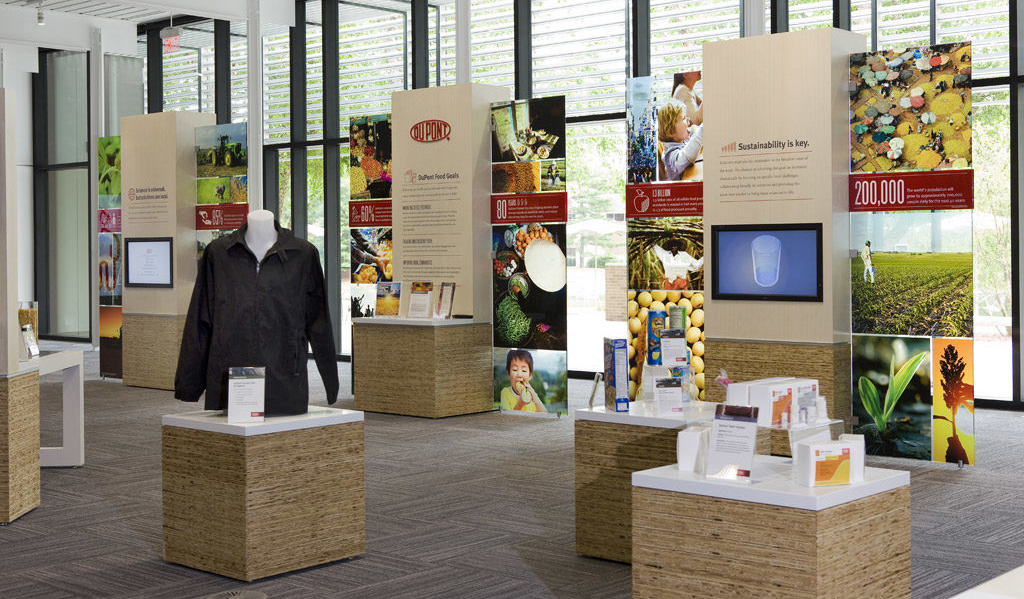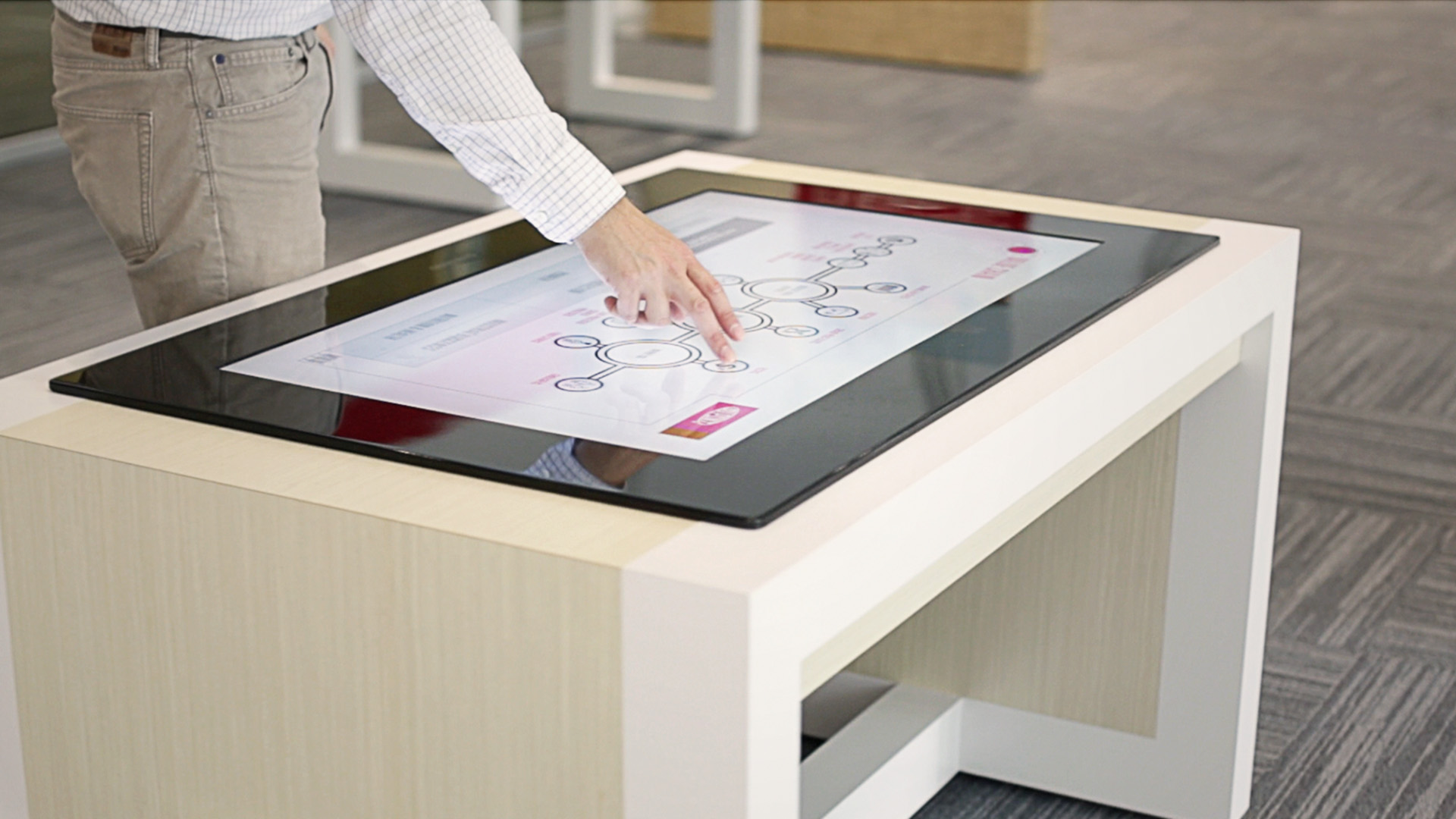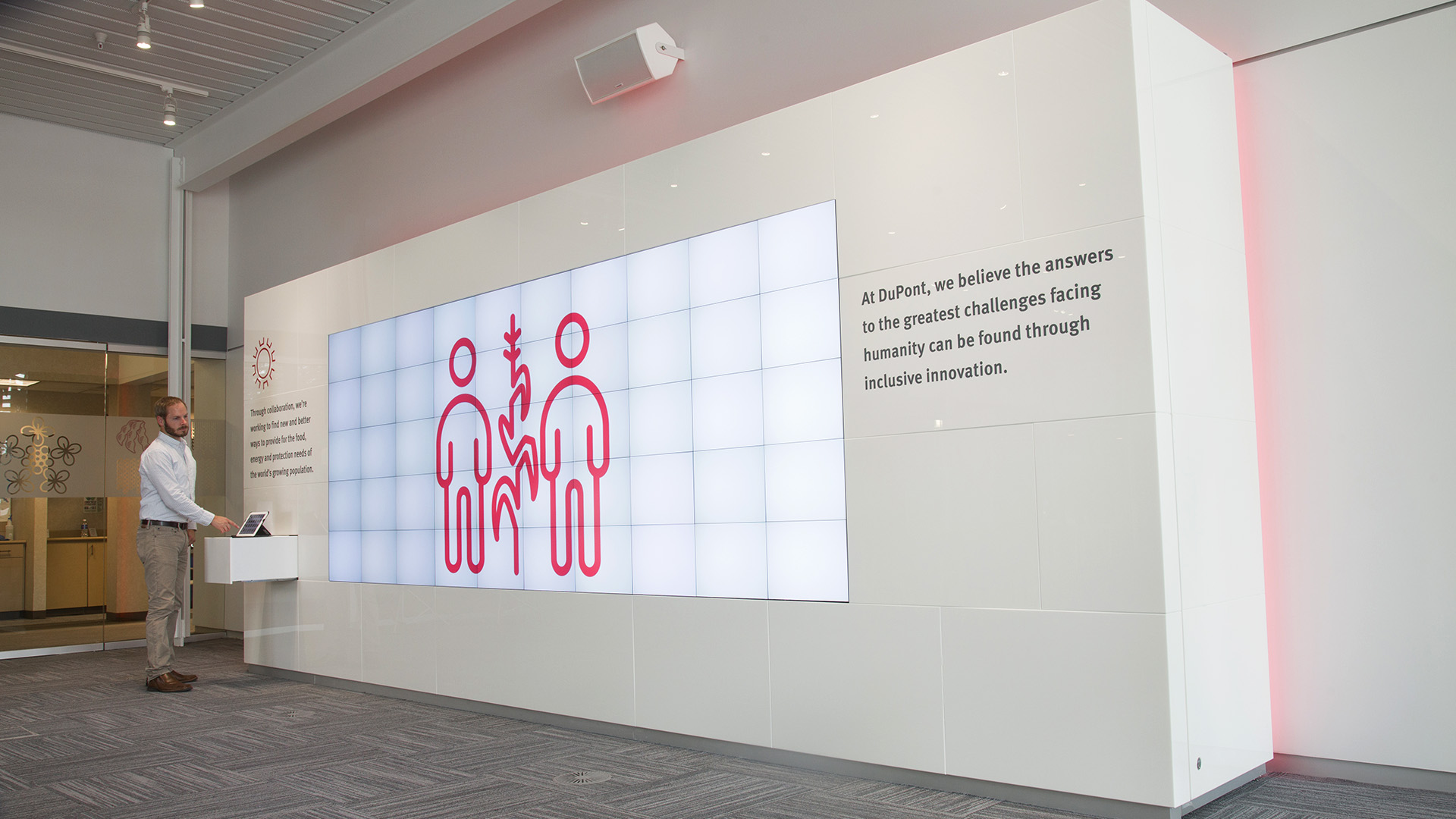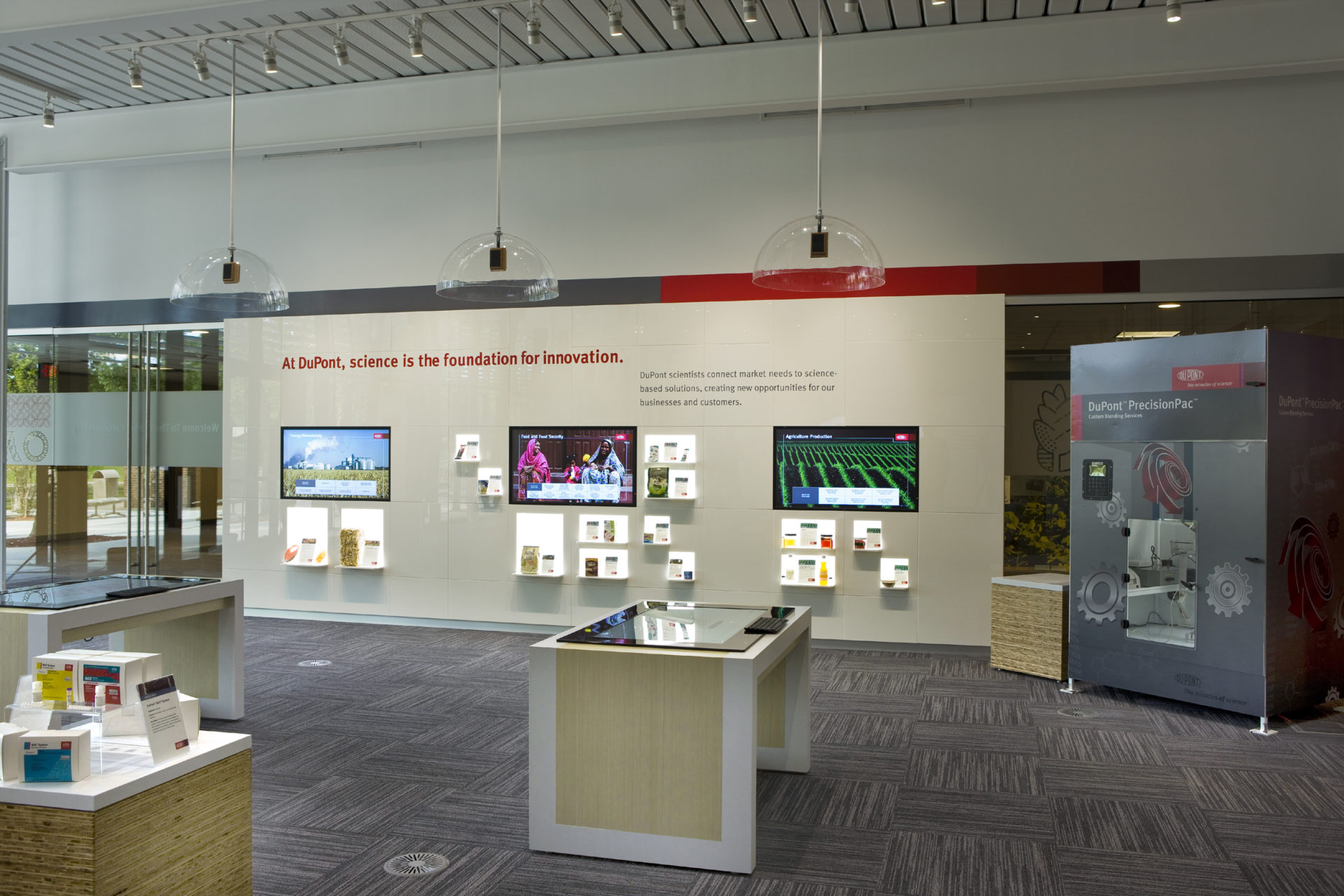Leveraging Brand in Corporate Spaces
What to consider when enlivening your company’s campus
Every corporate space serves a purpose—and has the potential to solve big problems.
You might be trying to get visitors on board with the overall purpose and vision of your brand. Perhaps you’re attempting to build a more vibrant work experience that will draw work-from-home employees back into the office. Or maybe you just need your space to provide a great in-person environment that leaves a positive, lasting impression.
A well-crafted corporate space or experience can accomplish so much.
The only caveat? To reap these rewards, you must build your environment the right way.
So how do you avoid common pitfalls? And how can you squeeze every ounce of potential out of your experience?
Here are seven things to keep in mind:

1. Consider the overall objective:
Sometimes it helps to start with the end. Take a moment to ponder how your visitors should think and feel after they’ve experienced your space. What is the lasting impression you hope to leave with them? Should they walk away thinking your company is innovative? Fun? Successful? Determining your preferred visitor takeaway can establish a clear purpose for the environment and shape how you plan to bring it to life.
2. Know your audience:
It’s imperative to meet your audience where they are. Carefully consider who will be encountering your space—and then craft an experience that fits their wants and needs. What do they know and what don’t they know? What matters to them? Will your experience be limited to adults, or might children be visiting as well? Once you identify your core audience, get to know them. Analyzing demographic data or hosting focus groups can help get to the root of who your audience is and what makes them tick, allowing you to create an experience that resonates with them and your goals.
3. Be selective:
Your organization likely has a rich, multilayered story. With that said, telling the entire history might be overkill. Think about the most important elements of your story and bring them to the forefront. Then think of it like a conversation: How can you reveal the key talking points in a way that doesn’t overwhelm but instead piques a natural interest to learn more. When you shape the high points correctly, not only will people understand the key takeaways, they’ll also be more inclined to explore parts of your story they may have had no interest or awareness of beforehand.


4. Create a varied experience:
People will experience your space in different ways, dedicating varying amounts of time and attention to it depending on their level of understanding and interest. By creating a multilevel experience, you can connect with everyone in a way that resonates strongly with them while also offering the opportunity for further exploration. High-square-footage headlines, for instance, can be utilized to make sure everyone picks up on the most important messaging. Mid-level content will be consumed by the majority of visitors but not all. Third-level content—often shared on interactive touch screens—can create a more in-depth experience for those who are interested in learning more.
5. Consider creature comforts:
We’re all human—and the more we remember that the better off your experience will be. If you’re creating a tour experience, think about how much time you want a guest to spend there. Make sure there’s an inviting place to sit and reflect along the way. And make sure necessities like restrooms and exits are available and easy to find. When basic needs are met, visitors are more able to focus on the exhibit itself and leave with the takeaway you desire.

6. Boldly tell your brand story:
Don’t be afraid to think big! When done right, your corporate space should serve as the physical embodiment of your brand. And that can be really exciting. Think about the story you want to tell and how you can do it most effectively. What are your brand’s core values, and what do they look like in action? What is your mission? And how can your space include proof points of the difference it makes in the world? What are your most compelling brand stories, and what visual metaphors can be used to tell them in new and intriguing ways? When you aim high and create a truly inspired space, everyone who sees it will walk away with a powerful impression of what you and your brand stand for.
7. Lean into flexibility:
Over time, your organization will evolve, and so will the objectives of your corporate experience. You should make a plan to keep content fresh and reflective of what’s new with your organization. Utilize wall graphics that can be swapped out and updated. Consider interactive screens that can be refreshed as new content becomes available. A good corporate environment is one that can change with the times without requiring a complete overhaul.

